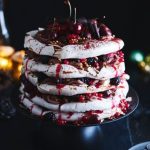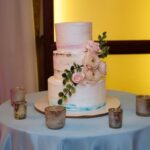Are you looking to elevate your cake decorating skills and create stunning designs? Learn how to use royal icing to decorate cakes and achieve professional-looking results. Royal icing is a versatile and classic decorating element that can be used to add intricate details, patterns, and textures to cakes. In this article, we will explore the significance of royal icing in cake decorating and provide step-by-step instructions on how to use it effectively.
Royal icing is a popular choice for professional bakers and home decorators alike due to its smooth finish and ability to hold intricate designs. It is made from a simple combination of egg whites or meringue powder, powdered sugar, and water, resulting in a smooth, hard finish once dried. Understanding the importance of royal icing in cake decoration can open up a world of creative possibilities for enhancing your baked creations.
Before diving into the exciting world of royal icing decoration, it’s essential to gather the necessary ingredients and tools. From piping bags and tips to food coloring gels and palate knives, having the right supplies at your disposal will make the process much smoother.
Additionally, understanding the correct consistency for royal icing is crucial in achieving the desired results. This introductory section will provide an overview of what royal icing is all about and set the stage for exploring its various applications in cake decorating techniques.
Ingredients and Tools Needed
Royal icing is a versatile and popular decorating medium for cakes, cookies, and other baked goods. To create stunning designs and decorations using royal icing, it’s essential to have the right ingredients and tools on hand. In this section, we will explore the specific items needed to make and work with royal icing.
Ingredients
The basic ingredients for royal icing include powdered sugar (also known as confectioners’ sugar), egg whites or meringue powder, and water. The powdered sugar serves as the base of the icing, while the egg whites or meringue powder provide stability and help achieve the desired consistency. Additionally, food coloring can be used to add vibrant hues to the icing for decorative purposes.
Tools
In addition to the necessary ingredients, there are specific tools that are indispensable when working with royal icing. These include piping bags (disposable or reusable), piping tips in various sizes and shapes, offset spatulas for spreading and smoothing the icing, and stencils for creating intricate designs. It’s also helpful to have toothpicks or small paintbrushes on hand for fine details and touch-ups.
Once you have gathered all the essential ingredients and tools, you will be well-equipped to start working with royal icing and elevate your cake decorating skills. In the following sections, we will delve into how to prepare royal icing with the perfect consistency and explore different techniques for creating beautiful designs on cakes.
Preparing the Royal Icing
Royal icing is a versatile and essential component in cake decorating, known for its smooth and elegant finish. Creating the perfect royal icing consistency is crucial to achieving a professional-looking cake design. Here’s how to prepare royal icing for your next cake decorating project:
- Start by gathering the necessary ingredients: confectioners’ sugar, meringue powder, and water. These simple ingredients can be easily found at any baking supply store or online.
- Once you have all the ingredients, sift the confectioners’ sugar to ensure that there are no lumps. This step is important to achieve a smooth texture for your royal icing.
- In a large mixing bowl, combine the sifted confectioners’ sugar and meringue powder. Gradually add water while mixing on low speed until the ingredients are well combined.
Achieving the perfect royal icing consistency is key to its success in decorating cakes. You want it to be thick enough to hold its shape when piped, but thin enough to flow smoothly when required.
To test the consistency of your royal icing, try the “10-second rule.” When you lift your spatula or spoon from the icing, it should take about 10 seconds for the surface to become completely smooth again. If it’s too thin, add more confectioners’ sugar; if it’s too thick, add small amounts of water until you reach the desired consistency.
With these simple steps and tips, you can easily prepare royal icing for your next cake decorating project and achieve beautiful designs with ease.
Piping Techniques
Basic Piping
One of the most common and versatile techniques for using royal icing to decorate cakes is piping. With a piping bag and the appropriate tip, you can create intricate designs, lettering, and borders on your cakes.
To start, fill a piping bag with the desired consistency of royal icing and twist the top to secure it. Hold the bag at a 45-degree angle to the surface of the cake and apply even pressure to pipe out the icing in your desired design.
Rose Piping
Creating beautiful, delicate roses with royal icing is a skill that requires practice but yields impressive results. To pipe roses, use a petal tip on your piping bag and apply gentle pressure while rotating the cake. Start by creating a small cone shape as the center of the rose, then add petals around it in a circular motion. With practice, you can master this elegant technique to add stunning floral accents to your cakes.
Shell Piping
Shell piping is another classic technique that adds texture and dimension to cake decorations. With a round or star-shaped tip, you can create shell borders along the edges of your cake or use them to fill in larger areas for a decorative effect. Simply hold the piping bag at an angle and squeeze out small bursts of icing, then release pressure and pull away to form individual shells.
By mastering these various piping techniques, you can elevate your cake decorating skills using royal icing. Experiment with different tips, colors, and designs to add personalized touches to your creations and impress friends and family with professionally decorated cakes.
As you practice these techniques keep in mind how important it is when decorating cakes finishing each detail care enough so it looks perfect.
Flooding Technique
The flooding technique is a popular and versatile method of using royal icing to decorate cakes. This technique involves outlining a design with a thicker consistency of royal icing and then filling in the shape with a thinner consistency, allowing it to spread and create a smooth, flat surface. The flooding technique is commonly used for creating backgrounds, adding color to large areas, and creating a base for more intricate designs on cakes.
To successfully use the flooding technique, you will need the following tools and ingredients:
- Piping bags
- Piping tips (such as round or star tips)
- Toothpicks or small offset spatula
- Gel food coloring
- Stiff consistency royal icing
- Flood consistency royal icing
Once you have all the necessary tools and ingredients ready, you can begin by outlining the design on your cake with the stiff consistency royal icing using a piping bag fitted with a small round or star tip. After outlining the design, fill in the shape with the flood consistency royal icing. Use a toothpick or small offset spatula to gently spread the icing to ensure that it completely covers the outlined area.
It’s important to allow each layer of icing to dry before adding additional layers or designs on top. This ensures that the colors do not bleed into each other and that your designs remain crisp and defined. By mastering the flooding technique, you can create visually striking cakes with smooth, vibrant surfaces that serve as the perfect canvas for more intricate decorations. With practice and patience, this technique will become an essential skill in your cake decorating repertoire.
Adding Color and Texture
Once you have mastered the art of making and piping royal icing, the next step is to learn how to add color and texture to take your cake decorating to the next level. Adding color to royal icing can transform a plain white canvas into a colorful work of art. Gel food coloring is the best choice for coloring royal icing, as it is highly concentrated and won’t affect the consistency of the icing.
To achieve the desired hue, start by adding a small amount of gel food coloring and mix well. Remember that a little goes a long way, so add more color gradually until you reach the perfect shade. For multiple colors, divide the royal icing into separate bowls before coloring. This will allow you to create different shades without having to mix each one separately.
In addition to adding color, you can also experiment with different textures when working with royal icing. You can achieve various effects by using different piping tips or by adding ingredients such as sanding sugar or edible glitter to create a sparkling finish. Texture can enhance the overall appearance of your cake decorations, adding depth and dimension to your designs.
Whether you want a smooth, glossy finish or a textured, matte effect, mastering the art of adding color and texture will elevate your cake decorating skills. With these techniques in mind, you will be able to create visually stunning cakes that are sure to impress.
Remember that practice makes perfect when it comes to using royal icing to decorate cakes. Experiment with different colors and textures to find what works best for your desired design. With time and patience, you’ll become adept at creating beautiful decorations that will wow your friends and family on any occasion.
Troubleshooting Common Issues
When using royal icing to decorate cakes, some common issues may arise that can be frustrating and challenging to resolve. One of the most frequent problems is the consistency of the royal icing.
If the icing is too thin, it will not hold its shape when piped onto the cake, leading to a messy and uneven design. On the other hand, if the icing is too thick, it will be difficult to work with and may create unwanted bumps or ridges on the cake.
To address this issue, always make sure to follow the recipe for royal icing closely and add water or powdered sugar gradually until you achieve the desired consistency. It’s also essential to use gel food coloring instead of liquid food coloring as it can alter the consistency of the royal icing.
Another common problem when working with royal icing is air bubbles forming in the piping bag, which can lead to uneven lines and designs on the cake. To prevent this issue, gently tap the filled piping bag on a flat surface to release any air bubbles before starting to decorate.
Additionally, humidity can affect how royal icing sets and dries. In humid conditions, it may take longer for the icing to dry completely, leading to smudged or blurred designs. To remedy this, work in a cool, dry environment and use a fan or dehumidifier if necessary.
Overall, understanding how to troubleshoot these common issues will allow you to confidently use royal icing to create beautifully decorated cakes without frustration or disappointment.
| Common Issue | Troubleshooting Solution |
|---|---|
| Incorrect consistency of royal icing | Follow recipe closely; adjust with water or powdered sugar gradually |
| Air bubbles in piping bag | Gently tap filled piping bag on flat surface before decorating |
| Humidity affecting drying process | Work in cool, dry environment; consider using fan or dehumidifier if necessary |
Storage and Shelf Life
When it comes to storing royal icing, it is essential to ensure that it is properly sealed and stored in an airtight container. This will prevent the icing from drying out and becoming unusable. Royal icing can be stored at room temperature for up to two weeks, or it can be refrigerated for up to a month.
If you need to store royal icing for a longer period, it can be frozen for up to three months. However, when you are ready to use the icing again after refrigerating or freezing, it is crucial to allow it to come back to room temperature before using.
One important thing to note is that if you plan on adding color and texture to your royal icing, it should be divided into separate containers before adding any coloring or texture elements. This will allow you to mix each color or texture variation without having leftover plain white icing go bad while waiting for the rest of the colors or textures to be used.
Proper storage not only ensures a longer shelf life for your royal icing but also saves you time and effort in the long run. Always check your royal icing carefully before use. If there are any signs of spoilage or an off smell, discard the icing immediately as consuming spoiled royal icing could lead to foodborne illness.
| Storage Method | Shelf Life |
|---|---|
| Room Temperature | Up to two weeks |
| Refrigeration | Up to one month |
| Freezing | Up to three months |
Overall, understanding how best to store royal icing will help maintain its quality and allow for ease of use in future decorating projects.
Conclusion
In conclusion, royal icing is a versatile and essential tool for any cake decorator. Its ability to create intricate designs and smooth surfaces makes it a popular choice for decorating cakes for various occasions. The process of using royal icing to decorate cakes may seem daunting at first, but with the right ingredients, tools, and techniques, anyone can master this skill.
As discussed in this article, understanding the proper consistency of royal icing is crucial to its successful use in cake decorating. Additionally, mastering piping techniques and the flooding method can elevate the overall look of a cake and provide endless possibilities for creative designs. Adding color and texture to royal icing allows decorators to customize their creations and bring their artistic vision to life.
It’s important to note that while working with royal icing, there may be some common issues that arise, such as air bubbles or inconsistent consistency. However, by troubleshooting these problems and following the tips provided in this article, decorators can overcome these challenges and achieve professional-looking results. Overall, mastering how to use royal icing to decorate cakes can open up a world of creativity and elevate the presentation of any baked creation.
Frequently Asked Questions
Can You Use Royal Icing to Decorate a Cake?
Yes, royal icing can be used to decorate a cake. It is a popular choice for creating intricate designs, borders, and lettering on cakes due to its smooth, hard finish when dried.
Can You Put Royal Icing Straight Onto a Cake?
It is possible to put royal icing straight onto a cake, but it’s important to ensure that the cake’s surface is clean and free of crumbs before applying the icing. Some bakers prefer to apply a thin layer of buttercream or ganache as a base before using royal icing.
How Do You Decorate With Royal Icing for Beginners?
For beginners, decorating with royal icing involves starting with simple designs such as dots, lines, and basic shapes. It’s important to practice consistent pressure and spacing when piping the icing onto the cake. Using stencils or templates can also help achieve neat and symmetrical designs.

Welcome to my blog about home and family. This blog is a place where I will share my thoughts, ideas, and experiences related to these important topics. I am a stay-at-home mom with two young children. I hope you enjoy reading it! and may find some helpful tips and ideas that will make your home and family life even better!





